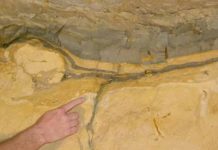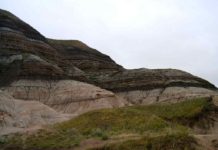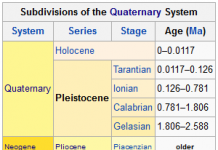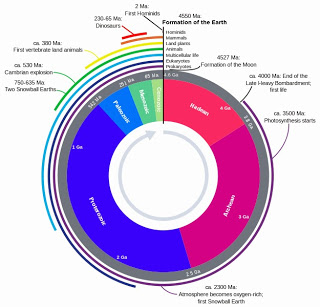
The Proterozoic is a geological eon representing the time just before the proliferation of complex life on Earth. The name Proterozoic comes from Greek and means “earlier life”. The Proterozoic Eon extended from 2,500 Ma to 542.0±1.0 Ma (million years ago), and is the most recent part of the informally named “Precambrian” time. It is subdivided into three geologic eras (from oldest to youngest): the Paleoproterozoic, Mesoproterozoic, and Neoproterozoic.
The well-identified events of this eon were the transition to an oxygenated atmosphere during the Mesoproterozoic; several glaciations, including the hypothesized Snowball Earth during the Cryogenian period in the late Neoproterozoic; and the Ediacaran Period (635 to 542 Ma) which is characterized by the evolution of abundant soft-bodied multicellular organisms.
The Proterozoic record
The accumulation of oxygen
One of the most important events of the Proterozoic was the accumulation of oxygen in the Earth’s atmosphere. Though oxygen is believed to have been released by photosynthesis as far back as Archean times, it could not build up to any significant degree until chemical sinks — unoxidized sulfur and iron — had been filled; until roughly 2.3 billion years ago, oxygen was probably only 1% to 2% of its current level. Banded iron formations, which provide most of the world’s iron ore, were also a prominent chemical sink; their accumulation ceased after 1.9 billion years ago, either due to an increase in oxygen or a more thorough mixing of the oceanic water column.
Red beds, which are colored by hematite, indicate an increase in atmospheric oxygen after 2 billion years ago; they are not found in older rocks. The oxygen buildup was probably due to two factors: a filling of the chemical sinks, and an increase in carbon burial, which sequestered organic compounds that would have otherwise been oxidized by the atmosphere.
Paleogeography and tectonics
Throughout the history of the Earth, there have been times when the continental mass came together to form a supercontinent, followed by the break-up of the supercontinent and new continents moving apart again. This repetition of tectonic events is called a Wilson cycle. It is at least clear that, about 1,000–830 Ma, most continental mass was united in the supercontinent Rodinia. Rodinia was not the first supercontinent; it formed at about 1.0 Ga by accretion and collision of fragments produced by breakup of the older supercontinent, called Nuna or Columbia, which was assembled by global-scale 2.0–1.8 Ga collisional events. This means plate tectonic processes similar to today’s must have been active during the Proterozoic.
After the break-up of Rodinia about 800 Ma, it is possible the continents joined again around 550 Ma. The hypothetical supercontinent is sometimes referred to as Pannotia or Vendia. The evidence for it is a phase of continental collision known as the Pan-African orogeny, which joined the continental masses of current-day Africa, South America, Antarctica and Australia. It is extremely likely, however, that the aggregation of continental masses was not completed, since a continent called Laurentia (roughly equivalent to current-day North America) had already started breaking off around 610 Ma. It is at least certain that by the end of the Proterozoic eon, most of the continental mass lay united in a position around the south pole.
Life
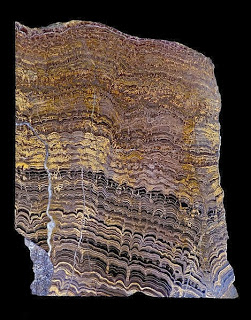
The first advanced single-celled, eukaryotes and multi-cellular life, Francevillian Group Fossils, roughly
The blossoming of eukaryotes such as acritarchs did not preclude the expansion of cyanobacteria; in fact, stromatolites reached their greatest abundance and diversity during the Proterozoic, peaking roughly 1200 million years ago.
coincides with the start of the accumulation of free oxygen. This may have been due to an increase in the oxidized nitrates that eukaryotes use, as opposed to cyanobacteria. It was also during the Proterozoic that the first symbiotic relationships between mitochondria (for nearly all eukaryotes) and chloroplasts (for plants and some protists only) and their hosts evolved.


